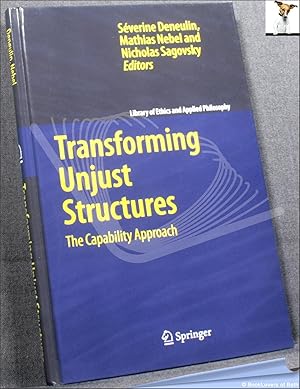SÉVERINE DENEULIN, MATHIAS NEBEL AND NICHOLAS SAGOVSKY TRANSFORMING UNJUST STRUCTURES The Capability Approach THE CAPABILITY APPROACH Structural injustice has traditionally been the concern of two major academic disciplines: economics and philosophy. The dominant model of economics has long been that of neo-classical economics. For neo-classical economists, human we- being is to be assessed by the availability of disposable income or according to goods consumed; it is measured by the levels of utility achieved in the consumption of commodities. Social order is fashioned by the ways consumers maximise their 1 well-being and enterprises maximise their profits. A core assumption is that all 2 commodities are commensurable: they can all be measured according to a single 3 numerical covering value, which is their price. Within this neo-classical paradigm, justice is achieved when the utility level of someone cannot be increased without 4 another person seeing his or her utility level decrease. The dominant paradigm of neo-classical economics was strongly challenged when development and welfare economist Amartya Sen received the Nobel Prize for Economics in 1998. His work offered an alternative to the neo-classical evaluation of human well-being in the utility/commodity space. The underlining philosophical intuition behind Sen’s work is that the standard of living lies in the living and not in the consumption of commodities. In searching for an alternative measure of human well-being, Sen devised his capability approach.
The "capability approach" of development economist Amartya Sen, who received the Nobel Prize for Economics in 1998, poses a major challenge to the dominant paradigm of neo-classical economics. According to Sen, human well-being does not depend on the consumption of commodities but on the freedoms human beings have reason to choose and value. The capability approach has frequently been criticised for a lack of attention to the ways in which unjust social, political and economic structures restrict human capabilities. The contributors to this volume take up this criticism in a number of ways, both theoretical and practical. The theoretical discussion engages with the thought of Sen himself and with the hermeneutical tradition represented by Paul Ricoeur. The practical discussion consists of five case studies examining the effectiveness of the capability approach in dealing with cases of structural injustice. These cover: racism in South Africa; access to labour markets in Europe; participation in higher education in the UK; poverty and welfare reforms in the US; and biotechnology patents. How effectively, ask all the contributors, can Sen’s capability approach be deployed in the transformation of unjust structures?
